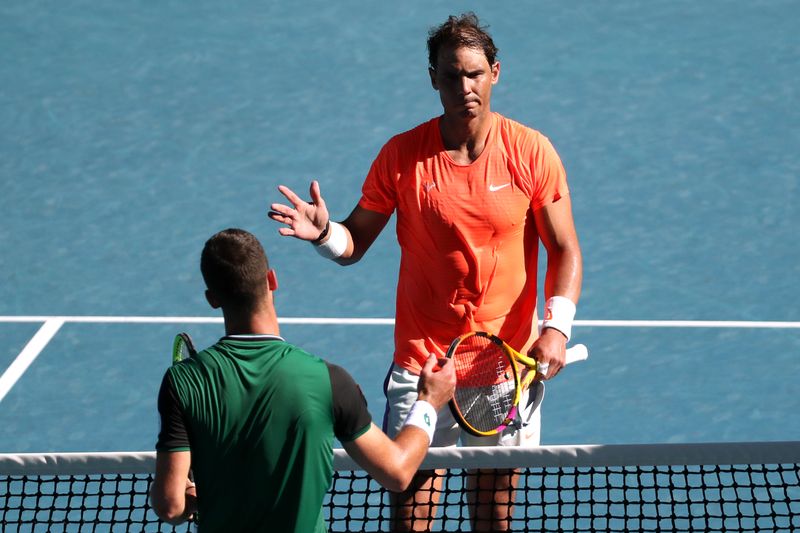MELBOURNE (Reuters) – Rafa Nadal defied his gloomy injury prognosis and complete lack of match practice to crush Laslo Djere 6-3 6-4 6-1 on Tuesday and reach the Australian Open second round as he launched his bid for a record 21st Grand Slam title.
The Spanish great had pulled out of his nation’s ATP Cup campaign with a back problem and was bordering on mournful on the eve on the Grand Slam when he said the injury was still affecting him.
Yet he was close to his all-action, fist-pumping best as he bounced around a sun-bathed Rod Laver Arena in the final set against Djere and painted the lines with trademark top-spin bombs.
“It’s been a tough 15 days for me,” said 2009 champion Nadal. “I needed to survive today so that’s what I did.
“I’m still alive and that’s the main thing.”
Second seed Nadal said his back was still bothering him against world number 56 Djere, the Spaniard’s first match since losing in the semi-finals of the ATP Finals in November.
“Today it’s not great. I needed to change a little bit the motion of my serve. That’s what I tried to survive that condition today,” said the 34-year-old.
“I need to go day-to-day and just try to stay positive.”
Sharing the all-time Grand Slam title record with Roger Federer, Nadal has not been able to add to his 2009 championship at Melbourne Park, despite four trips to the final.
A string of injuries have hurt his chances in Melbourne through the years, which three-times Australian Open champion Mats Wilander put down to the relative punishment of honing his high-energy game on hardcourts in the off-season.
“It could be a combination of hard courts and practising, needs more repetition and pushes himself hard,” the Eurosport pundit said.
“This is Rafa Nadal, this is what he has done throughout his whole career and he is going to push himself to the limit.”
Nadal said he hoped to last as long as he could in Australia, where people have regained most of their pre-pandemic freedom after containing COVID-19.
Nadal had “no parties for one year already”, at home in Spain.
“Here (people) are in a different situation. They are able to stay together. They are able to go out and have fun and be a lot of people together in one place, so it’s a different story than what we are facing.
“We dream about being back to that situation.”
(Reporting by Ian Ransom; Editing by Peter Rutherford and Ed Osmond)





























